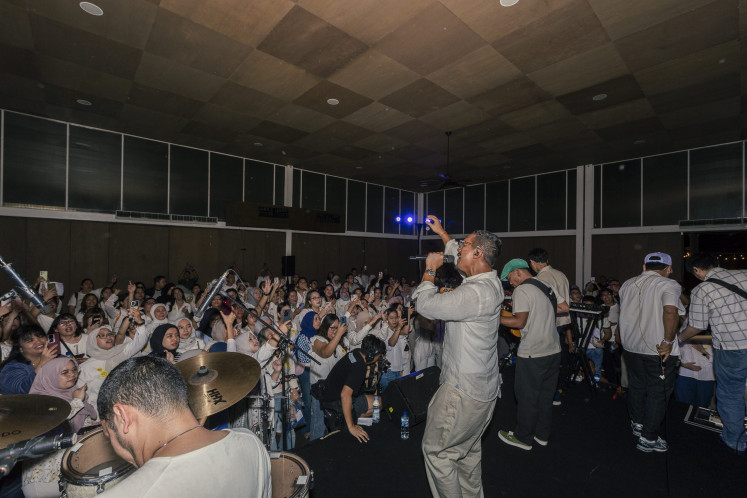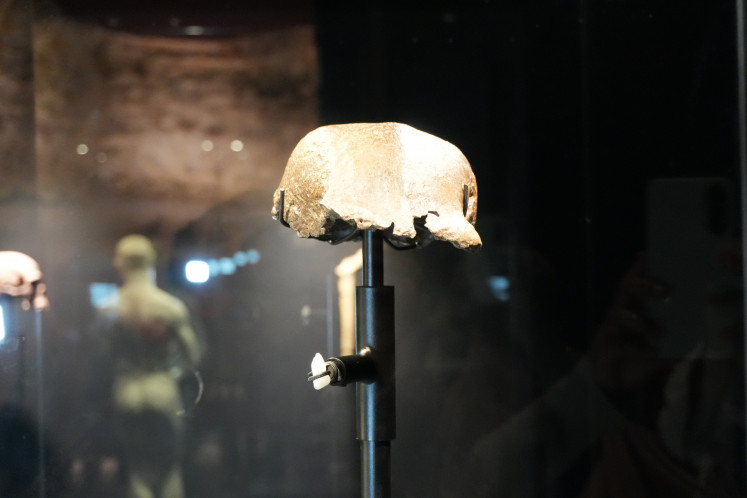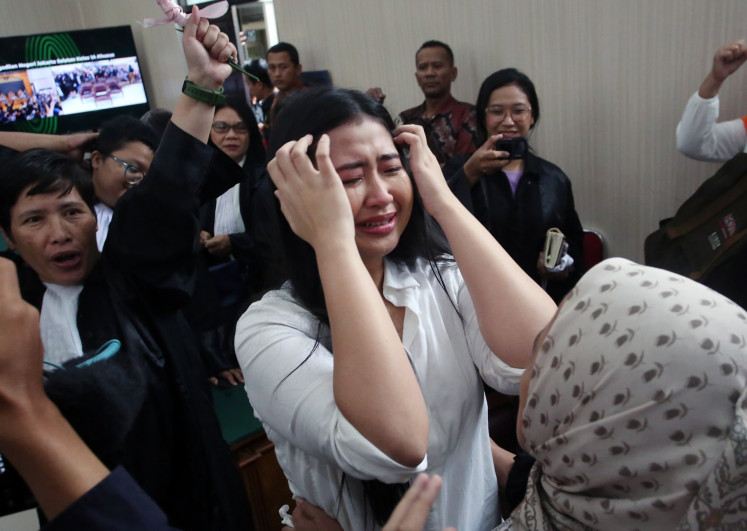Popular Reads
Top Results
Can't find what you're looking for?
View all search resultsPopular Reads
Top Results
Can't find what you're looking for?
View all search resultsPreserving traditional values through stamped batik
There are clear differences between two types of batik: batik cap (stamped batik) and batik tulis (hand-drawn batik).
Change text size
Gift Premium Articles
to Anyone
B
atik has two definitive meanings: it is the process of creating motifs on a fabric using a wax-dyeing technique, and it can refer to the very motifs and patterns themselves.
There are clear differences between two types of batik: batik cap (stamped batik) and batik tulis (hand-drawn batik).
Batik printing, or the process in which fabrics are printed with batik motifs using industrial machines, does not result in authentic batik.
Competition in the market among batik tulis, batik cap and batik printing is not new. The art of batik has been around for centuries, including throughout the 18th century when the archipelago's kingdoms flourished. The only known technique used then was batik tulis, a process in which fabrics are painted using liquid wax and canting to create motifs that symbolize local culture and philosophies. In around the 1920s, batik craftsmen started to learn the batik cap technique as a response to competition from India and China in batik trade.
Batik cap is a technique in which batik motifs are created using copper stamps. In this process, motifs are carved onto 20 by 20 centimeter copper plates, which are used to stamp liquid wax on the fabrics. This technique was inspired by an Indian wood-stamping technique that became popular through trade routes to Sumatra before gaining in popularity on Java Island.
This stamped technique significantly decreases the time it takes to make batik. Batik tulis requires a process that takes one to three months, while batik cap can create designs in roughly one week, depending on the intricacy of the motif. Otherwise, the difference between the two in the coloring and nglorot (wax decay) processes is not significant.
As a result of the faster process, the stock of batik cap is greater in the market, making it much cheaper than batik tulis.
However, batik cap has fewer motifs due to the use of the stamp and can therefore not compete with the intricacy and detailed motifs used in batik tulis.
Read also: Three ways to identify quality batik
Bangun Setiawan, an artisan in Waringinrejo in Sukoharjo, Central Java, said batik cap dominated the market. "Buying batik cap means customers can wear real batik but at a lower price than batik tulis," he said.
Batik cap is usually available starting at Rp 150,000 (US$10), much cheaper than batik tulis, which can cost millions of rupiah. Meanwhile, batik printing creates designs that can cost Rp 60,000, though its quality is worse.
"Batik cap has limited motifs that are monotonous, however, one motif can be produced at a massive scale, which is very difficult to do in batik tulis. Hence, batik cap can fulfill the demand of wholesale trade since it can supply batik in large amounts and with a faster manufacturing time," Bangun said.
Batik cap has continued to develop with the rise of contemporary batik motifs that no longer rely on traditional techniques. This has opened a new fashion-forward and youth segment in the batik market.
Nevertheless, more traditional techniques will continue to have its own segment in the market because traditional batiks are preferred at official events and traditional ceremonies. (kes)











